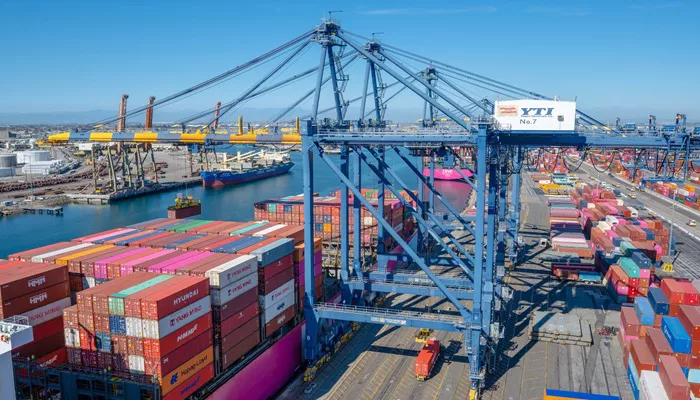The erratic tariff policies of the US government have been continuously affecting the operations of US ports. This situation is expected to lead to a reduction in goods on store shelves in the coming months, significantly increasing the purchasing pressure on ordinary Americans.
Western US Ports Hit Hard
July – September is the traditional peak season for ports in the western United States. However, in early May, the inbound freight volume at the Port of Los Angeles, one of the busiest container ports in the US, dropped by 30%. Serving as the main destination for most Asian goods exported to the US mainland, approximately 45% of the shipments to this port originate from China.
Gene Seroka, the port’s executive director, pointed out that the decline in business was reflected in the reduction of truck drivers and port workers, a trend that was particularly noticeable in the first week of May. With other countries imposing retaliatory tariff measures, especially targeting American agricultural products, US exports dropped for the fifth consecutive month in April.
Seroka predicts that the cargo volume at the Port of Los Angeles for the entire month of May will decline by a double – digit percentage compared to the previous year. Additionally, 10 ships that were originally scheduled to arrive have been cancelled in June. He noted that the 90 – day tariff suspension period is relatively short, just enough time for order placement, production, stockpiling, and transportation processes.
California, with its GDP and import volume ranking first among all US states, has seen its local supply chain disrupted, resident costs increased, and employment threatened due to the White House’s excessive tariff impositions. In April, the state government filed a lawsuit against the Trump administration over the tariffs, seeking a court order to prohibit their implementation.
The Northwest Seaport Alliance, representing the ports of Seattle and Tacoma, reported that from the last week of April to the first week of May, the inbound freight volume at these ports also dropped by 30%.
Import Volume Decline and Retailer Concerns
According to the latest trade data released by the Federal Census Bureau, the total import volume at all US ports decreased by $68.4 billion in April. Previously, retailers had stocked up on goods before the “equivalent tariffs” took effect on April 2. The current decline in import volume likely indicates that retailers have insufficient buffer stocks to withstand the impact of tariffs, which could lead to continued price increases.
Jonathan Gold, vice president for supply chain and customs policy at the National Retail Federation, said that contrary to the initial expectation of a flood of imported goods, people are now much more cautious and have scaled back their high expectations.
Legal Rulings and Policy Uncertainty
On May 29, the Federal Circuit Court of Appeals approved the Trump administration’s request, temporarily suspending a previous ruling by the US International Trade Court. The earlier ruling had prohibited the implementation of an executive order by the Trump administration that imposed tariffs on multiple countries based on the International Emergency Economic Powers Act (IEPPA).
Gold described the political situation as a game of table tennis – like back – and – forth. For American retailers, the frequent changes in tariff policies have left them in a state of confusion. Since they have to place orders weeks or even months in advance, many are forced to adopt a wait – and – see approach.
Daniel Hackett, a partner at maritime strategy and logistics firm Hackett Associates, emphasized that all these uncertainties translate into costs.
Broader Economic Implications
Professor Jeffrey Sonnenfeld from the Yale School of Management warned that the actual losses of enterprises could be two or three times higher than the disclosed figures. He also pointed out that the ripple effects of the tariff issue could be even more severe, potentially leading to a decrease in consumer and business spending and an increase in inflation expectations.
Price Hikes by Enterprises
Some enterprises have started passing on their losses to consumers through price increases. Large retailers such as Walmart and Best Buy, consumer goods companies like Procter & Gamble and Adidas, and car manufacturers like Ford have all announced price hikes.
Related topics:

